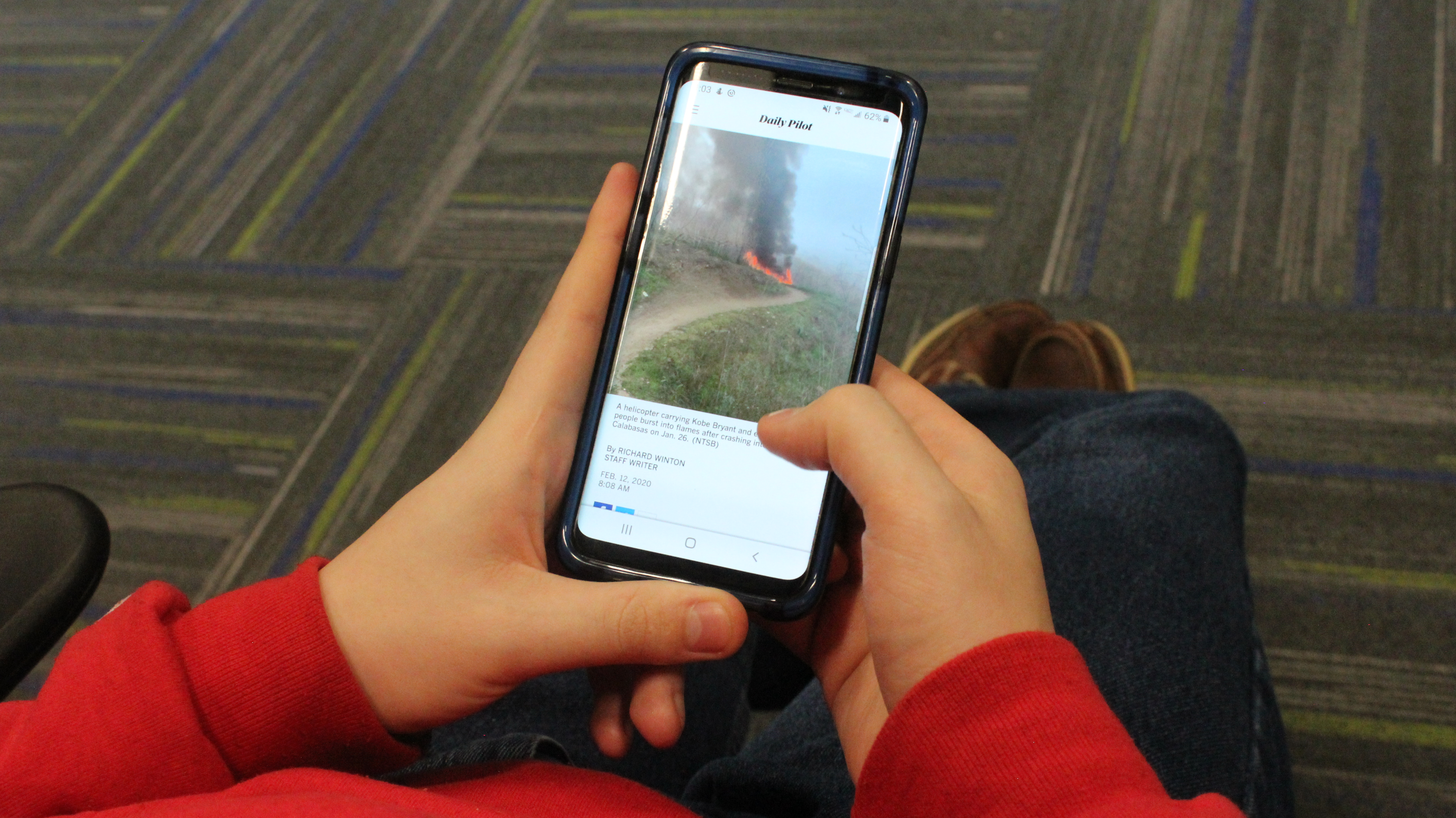By Preston Byers
Jambar Contributor
The chair of the Youngstown State University Department of Communication said he’s puzzled about the need to be first in the age of social media.
Since journalists can publish a story online anytime, Adam Earnheardt said the race to be first is pointless.
“I’ll never understand why there’s still this desire to be first among journalists because it really doesn’t matter anymore,” he said. “It matters more who’s right. A lot of journalists — especially old-school journalists — are still in the mindset of, ‘Got to be first.’”
One of the most recent examples of this came Jan. 26 when NBA legend Kobe Bryant, his 13-year-old daughter Gianna and seven others died in a helicopter crash in Calabasas, California.
In the hours following the crash, Matt Gutman, ABC News’ chief national correspondent, wrongly reported that Bryant’s four children were involved in the fatal helicopter crash, which led to public outcry on social media and, eventually, his suspension.
In general, news coverage surrounding the fatal crash was spotty and inaccurate. Some preliminary reports, like Gutman’s, stated Bryant and his four daughters were all killed, while others said Bryant’s wife, Vanessa, and former teammate Rick Fox were also on board. And for much of the day, only five were reported dead.
Ultimately, corrections were made, and the world learned a valuable lesson: It doesn’t matter who reports something first if it’s not accurate.
Kati Hartwig, YSU coordinator of social media and digital marketing, said the fast-moving nature of Twitter, a place where plenty of news is broken, may exacerbate journalists’ push to be first to stories.
“There’s a struggle to be first, especially on Twitter, where it moves so quick,” she said. “And if you’re not the first to report, you don’t go viral. So it’s this constant need to be first to report it that gives us those gaps in the actual story.”
One of the most effective solutions in order to get accurate information, according to Hartwig and Shelley Blundell, assistant journalism and communication professor at YSU, is to follow credible media sources, such as the YSU social media accounts for which Hartwig is responsible, that post quick, clear and accurate messages to followers.
“A better strategy for people who are using social media to get information, particularly in breaking news or crisis situations, is to look for official channels as much as possible,” Blundell said. “Origin and authority count a great deal when getting that kind of information.”
“People also should look across platforms and information sources to see where things are similar and to see where they differ before they start sharing things unilaterally,” she added.
Some users have called for Twitter, Facebook and Instagram to combat misinformation spread on the respective sites. While none of the three have completely stopped false or misleading information, Twitter has taken steps toward doing so.
In January, Twitter implemented a system in which users can report misleading information about an election. Twitter also has collaborated with the U.S. Census Bureau to address misinformation about the census in April.
Some argue that in addition to the platforms, the responsibility of policing misinformation lies with the users themselves. Blundell believes that those who use social media are liable for their use of it.
“If you go to Home Depot and you rent a jackhammer, you’ll [be given] a bunch of warnings and instructions. But ultimately, when you take that tool home, how you use it is up to you. I feel the same way about social media,” she said.
